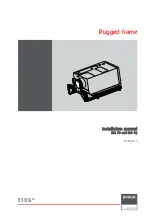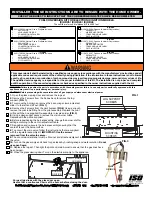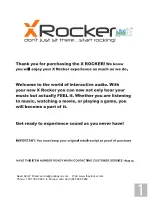
2
2
2-8
2-8
Functions > Basic Function > Authentication at TX
Functions > Basic Function > Authentication at TX
Authentication at TX
When the mail server is set on the internet, you need to prevent from Third Party Mail Relay
that the third party uses the false name. Third Party Mail Relay means that the third party
sends large amount of spam mails using the mail server which other people are operating. If
you do not take any measures for this, resources like server and network lines are exhausted
and at the same time, you will get the claim from the user who received the spam mail. As a
measure, the authentication operation when SMTP transmission is prepared.
In case of the inner network (LAN), you can prevent from Third Party Mail Relay by restricting
the IP address and the domain name. In order to send from the outside domain using the
mail address or securely use the mail server set on the internet which the provider prepares,
the authentication is indispensable at the transmission. This machine uses two authentication
methods, POP Before SMTP and SMTP AUTH and they enable to send i-FAX and e-mail to
SMTP server which requests the sender's authentication.
POP before SMTP
With this method, before SMTP transmission is performed, the POP server is logged into.
SMTP transmission can only be continued once the POP server has confirmed the IP
address of the connected client as authorized within a specific period of time. After user
authentication is carried out at the POP server, the authenticated client IP address is relayed
to the SMTP server, where it is processed. The process requires a certain amount of time.
Taking this processing time into consideration, there is an idle period of 300msec, from
POP authentication to the start of SMTP transmission. If a POP before SMTP transmission
is generated during POP reception, POP authentication is made to wait until the reception
is finished and then POP authentication and SMTP transmission are performed. Errors
occurring while the POP server is connected are treated as transmission errors.
With regard to the actual programming, all that is necessary is for System Settings > Network
Settings > E-Mail/ I-Fax > Authent./ Encryption > POP Authentication bofore Sending to be
set to ON.
Related new user error codes are #810 and #813. For details, refer to Troubleshooting.
SMTP AUTH
In SMTP AUTH, user authentication is performed when the SMTP server is connected, so that
mail can only be received from registered users. This method was standardized in March,
1999, as RFC2554. SMTP AUTH uses ESMTP protocol, which is an extension of SMTP,
and uses the SASL (Simple Authentication and Security Layer) authentication mechanism,
standardized as RFC2222, to authenticate the user by sending the user name and password
information in response to the server challenge data.
<Authentication mechanisms>
The SMTP server can have multiple authentication mechanisms and the most suitable
authentication mechanism is programmed in accordance with the security policy decided by
the SMTP server administrator. The client E-Mail client application selects the authentication
algorithm from among the available authentication mechanisms and performs authentication
upon transmission.
This model supports the following three types of authentication mechanism.
CRAM-MD5
Challenge-Response Authentication Mechanism, computed by using the key-protected MD5
algorithm by HMAC-MD5 (RFC2104)
PLAIN
Assumes that user name and password are sent as plain text (BASE64 encoded) and the
communication packet is encoded. (RFC2595) Allows secure authentication when used in
combination with the encoded transmission described later.
LOGIN
Sends the user name and password as plain text (BASE64 encoded). Actual transaction is
the same as with PLAIN. Similarly, allows secure authentication when used in combination
with encoded transmission.
<SMTP AUTH transmission operation>
Even if the unit is programmed for transmission with SMTP AUTH, if the mail server does
not support SMTP AUTH and the encoding system supported by the server does not match
that supported by this model, SMTP AUTH transmission will not be possible. In that case,
even if SMTP AUTH is programmed, transmission will be by normal SMTP and there will be
no transmission error generated. If an unauthenticated mail transmission is attempted to a
server that will not allow such transmission, subsequent SMTP protocols will generate an
error in the mail server. Unauthenticated mail can be transmitted to a server that will accept
such transmission. These security policies are determined by the server so, even if SMTP
AUTH is not programmed, it is impossible to tell whether transmission is possible without
checking with the customer's server administrator.
















































